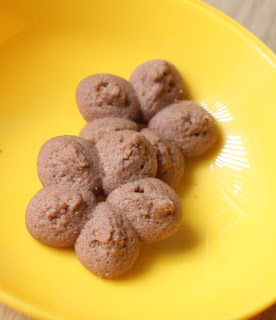Long time no postings. Family issues have stepped in and required all my attention. I’ve missed the "online kitchen", but sometimes we cannot do everything we want to…
Back to baking…
Shame on me, I don’t even know the difference between a pound cake and a butter cake. Maybe a butter cake recipe calls for more butter? I’m not sure, but I’ve always thought that they are the same: dense and a bit dry. But I have to admit that sometimes I like baking pound cakes because they are not difficult to put together.
Then I happened to see this recipe… What the author at Rasa Malaysia had to say about this butter cake made me eager to bake it. The making seems simple but the result seems satisfying.
And the result was, in fact, really satisfying. I baked it today. The cake looked lovely, and when served warm just out of the oven, it was so soft and fluffy and buttery. It smelled great too. The whole kitchen was filled with butter and vanilla aroma, fantastic.
I baked 2 mini loaves (20cm x 7cm each) and gave one to a poor old lady. So, that loaf warmed my heart too.
Recipe (source):
- 2 and 1/3 stick (250g) unsalted butter, at room temperature
- 7 oz (200g) plain flour/all purpose flour
- 1 tsp baking powder
- 7 oz (200g) castor sugar (I used 180g)
- 4 eggs
- ½ tsp salt
- 4 tablespoons fresh milk (I used 60g, I didn’t even know for sure if 60g milk is equal to 4 TBSP or not)
- 1 teaspoon vanilla essence
- 1/4 cup raisins + 1 tablespoon all purpose flour (to coat the raisins) (I used 50g raisins, but next time I think I’ll use some more)
- 7 oz (200g) plain flour/all purpose flour
- 1 tsp baking powder
- 7 oz (200g) castor sugar (I used 180g)
- 4 eggs
- ½ tsp salt
- 4 tablespoons fresh milk (I used 60g, I didn’t even know for sure if 60g milk is equal to 4 TBSP or not)
- 1 teaspoon vanilla essence
- 1/4 cup raisins + 1 tablespoon all purpose flour (to coat the raisins) (I used 50g raisins, but next time I think I’ll use some more)
Method:
1. Preheat oven to 350°F.
2. Lightly grease the pans with some butter.
3. Mix the flour and the baking powder and salt together and sift.
4. Use an electronic beater to mix butter and sugar until well combined or pale yellow in color. (Note: Sugar has not dissolved yet).
5. Add eggs, one at a time, beat well after each addition.
6. Scrape down the sides for even mixing.
7. Add in vanilla essence and mix well.
8. Fold in ½ flour mixture, and mix well.
9. Add in all the milk then the rest of flour mixture. With a spatula, fold in the raisins. Mix well.
10. Pour the mixture into the greased baking pans. Shake them lightly to distribute cake mixture evenly.
11. Bake until golden brown and cooked, about 45 minutes. Use a cake tester to test if it’s cooked.
12. Remove it from the oven and let cool on the wire rack for another 5 minutes. Serve warm.
2. Lightly grease the pans with some butter.
3. Mix the flour and the baking powder and salt together and sift.
4. Use an electronic beater to mix butter and sugar until well combined or pale yellow in color. (Note: Sugar has not dissolved yet).
5. Add eggs, one at a time, beat well after each addition.
6. Scrape down the sides for even mixing.
7. Add in vanilla essence and mix well.
8. Fold in ½ flour mixture, and mix well.
9. Add in all the milk then the rest of flour mixture. With a spatula, fold in the raisins. Mix well.
10. Pour the mixture into the greased baking pans. Shake them lightly to distribute cake mixture evenly.
11. Bake until golden brown and cooked, about 45 minutes. Use a cake tester to test if it’s cooked.
12. Remove it from the oven and let cool on the wire rack for another 5 minutes. Serve warm.




























